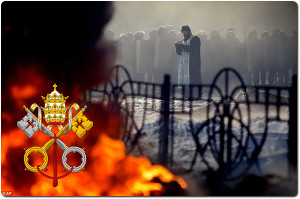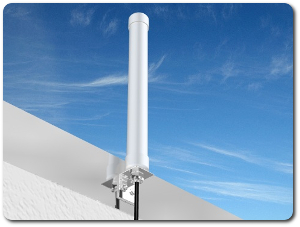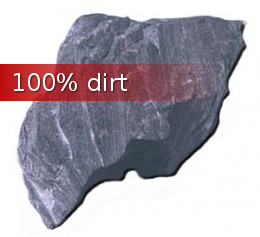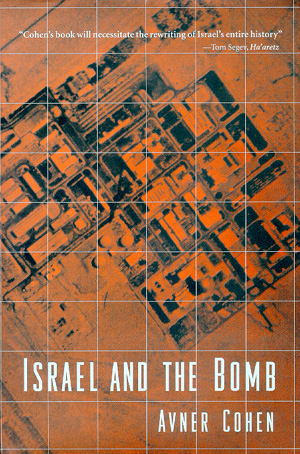How Japan can cool down the earthquake damaged nuclear reactors.
World news Saturday, March 19th, 2011
Japan has been working around the clock to try and cool down the earthquake damaged nuclear reactors. They have been pouring water into the reactor core by land, sea and air but to no avail. What can be used besides water to help cool down the core rods? A previous article suggested injecting CO2 (carbon dioxide) into the core in the form of dry ice. Another form of CO2, which is more readily available, can be used to help cool down the core. This alternative form of CO2 will work a lot better than using sea water. What I am talking about is baking soda.
In order to cool the reactor core some way must be found to lower the temperature of the core. It is a major mistake for Japan to flood the reactor core with sea water as the sea water composition is easily broken down when exposed to radiation. Salt water has a stable composition of sodium chloride (the salt) and hydrogen and oxygen (the water). But the radiation waves from the reactor core can disrupt that stability, degrading the bonds that hold the chemicals in salt water together. This releases the volatile hydrogen molecules, and the heat output from the nuclear reactor core rods can ignite them and burn them.
Evidence of this sea water reaction was presented by John Kanzius, a Washington County native, who tried to desalinate seawater with a generator he developed to treat cancer, and it caused a flash in the test tube. Within days, he had the salt water in the test tube burning like a candle, as long as it was exposed to a radio frequencies – Radio waves are a type of electromagnetic radiation.
The salt water wasn’t burning, despite appearances. The radio frequency (electromagnetic radiation) weakens the bonds holding together the constituents of salt water — sodium chloride, hydrogen and oxygen — and releases the hydrogen, which, once ignited, burns continuously when exposed to the RF energy field. An independent source measured the flame’s temperature, which exceeded 3,000 degrees Fahrenheit, reflecting an enormous energy output.
So how can baking soda (sodium bicarbonate) help cool the reactor core? Baking soda is NaHCO3, which under heating condition decomposes to product CO2 gas (carbon dioxide).
NaHCO3 + Heat = NaOH + CO2(gas)
Solid NaHCO3 (baking soda) begins to lose carbon dioxide and water around 100°C, with complete conversion to sodium carbonate by 200°C. Because of the CO2 gas, the reactor core rods won’t be able tot get the amount of oxygen that is necessary for it to get hotter and melt down.
If you ask any firefighter what it takes to create a fire, you will learn that you have to have three things:
- A fuel – nuclear reactor fuel rods
- Oxygen to react with the fuel- blown dome exposes the fuel rod to an unlimited supply of oxygen
- Heat – There must be enough heat to get the fuel above its flash point. The nuclear chain reaction creates heat in the reactor core . Heat from nuclear fission is used to raise steam, which runs through turbines, which in turn powers electrical generators.
If you want to put out a fire, you need to remove one of the three elements. When you watch firefighters battling a fire, they generally try to remove fuel or heat. Either they pour water on the fire to reduce the temperature, or they try to bulldoze strips of bare earth to eliminate the fuel. Like firefighters the Japan nuclear reactors technicians are trying to put out the fire by pouring in sea water.
It is apparent to them that they have no other choice but to use sea water. They can’t remove the fuel – rods – and they can’t eliminate the supply of oxygen. Unfortunately, they are forgetting about another method of putting out fires that is used by firefighters around the World. Using baking soda to extinguish a fire instead of water.
Solid sodium hydrogen carbonate (baking soda) fire extinguishers works by eliminating oxygen and replacing it with carbon dioxide. Those types of extinguisher sprays a very fine powder of sodium bicarbonate (NaHCO3, baking soda), potassium bicarbonate (KHCO3, nearly identical to baking soda), or mono ammonium phosphate ((NH4)H2PO4). These solids coat the fuel and smother the fire.
Cutting off the oxygen supply to the core will retard the rise in core temperature. Lowering the core temperature will prevent a meltdown.
Short URL: https://presscore.ca/news/?p=1720

 The Halifax International Security Forum was founded in 2009 as a propaganda program within the German Marshall Fund (founded June 5, 1972 by West German Chancellor Willy Brandt) by the Crown in Canada using Crown Corp ACOA & DND funds. The Halifax International Security Forum is a front that is used to recruit top US, UK and Canadian gov and military officials as double agents for Canada's WWI, WWII enemy and wage new Vatican Germany Cold War.
High Treason: s.46 (1) Every one commits high treason who, in Canada (c) assists an enemy at war with Canada, ..., whether or not a state of war exists". Every one who, in Canada assists Canada's enemies wage "piecemeal WWIII" Cold War by organizing, funding and participating in the Germany government politically and militarily benefitting / lead Halifax International Security Forum is committing high treason.
The Halifax International Security Forum was founded in 2009 as a propaganda program within the German Marshall Fund (founded June 5, 1972 by West German Chancellor Willy Brandt) by the Crown in Canada using Crown Corp ACOA & DND funds. The Halifax International Security Forum is a front that is used to recruit top US, UK and Canadian gov and military officials as double agents for Canada's WWI, WWII enemy and wage new Vatican Germany Cold War.
High Treason: s.46 (1) Every one commits high treason who, in Canada (c) assists an enemy at war with Canada, ..., whether or not a state of war exists". Every one who, in Canada assists Canada's enemies wage "piecemeal WWIII" Cold War by organizing, funding and participating in the Germany government politically and militarily benefitting / lead Halifax International Security Forum is committing high treason.
 Please take a moment to sign a petition to
Please take a moment to sign a petition to 


































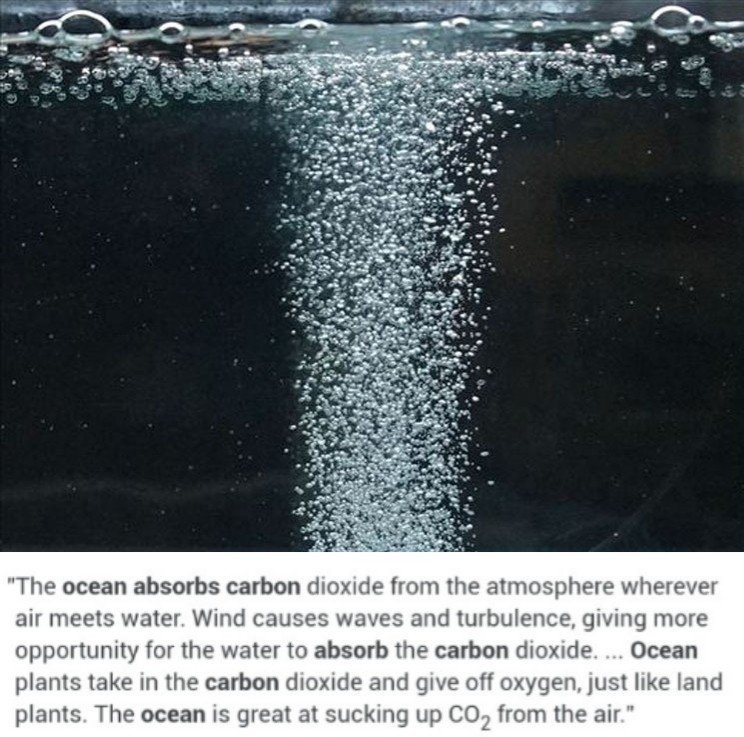






 1917 Code of Canon Law, Canon 185 invalidates (voids) all papacies since October 26, 1958 due to the fact Cardinal Giuseppe Siri was elected Pope on the Third ballot on Oct 26 1958 but the new Pope Gregory XVII was illegally prevented from assuming the office. A Pope was elected on October 26, 1958. Thousands of people witnessed a new Pope being elected by seeing white smoke and millions were informed by Vatican radio broadcasts beginning at 6:00 PM Rome time on October 26, 1958. The papacy of Francis, Benedict, John Paul II, John Paul I, Paul VI, John XXIII and any and all of their respective doctrines, bulls, letter patents and the Second Vatican Council are all invalidated (having no force, binding power, or validity) by Canon 185 because the 1958 conclave of cardinals elected Cardinal Giuseppe Siri Pope on Oct 26 1958. Cardinal Giuseppe Siri accepted the papacy by taking the name Pope Gregory XVII but was illegally prevented from assuming his elected office.. According to Canon 185 Cardinal Angelo Giuseppe Roncalli illegally assumed the papacy 2 days later by fraud and grave fear, unjustly inflicted against Cardinal Giuseppe Siri who was lawfully elected Pope Gregory XVII. Because no Pope has been lawfully elected since October 26, 1958 the Holy See (la Santa Sede/Seat) remains vacant.
1917 Code of Canon Law, Canon 185 invalidates (voids) all papacies since October 26, 1958 due to the fact Cardinal Giuseppe Siri was elected Pope on the Third ballot on Oct 26 1958 but the new Pope Gregory XVII was illegally prevented from assuming the office. A Pope was elected on October 26, 1958. Thousands of people witnessed a new Pope being elected by seeing white smoke and millions were informed by Vatican radio broadcasts beginning at 6:00 PM Rome time on October 26, 1958. The papacy of Francis, Benedict, John Paul II, John Paul I, Paul VI, John XXIII and any and all of their respective doctrines, bulls, letter patents and the Second Vatican Council are all invalidated (having no force, binding power, or validity) by Canon 185 because the 1958 conclave of cardinals elected Cardinal Giuseppe Siri Pope on Oct 26 1958. Cardinal Giuseppe Siri accepted the papacy by taking the name Pope Gregory XVII but was illegally prevented from assuming his elected office.. According to Canon 185 Cardinal Angelo Giuseppe Roncalli illegally assumed the papacy 2 days later by fraud and grave fear, unjustly inflicted against Cardinal Giuseppe Siri who was lawfully elected Pope Gregory XVII. Because no Pope has been lawfully elected since October 26, 1958 the Holy See (la Santa Sede/Seat) remains vacant.
 Hold the Crown (alias for temporal authority of the reigning Pope), the Crown appointed Governor General of Canada David Lloyd Johnston, the Crown's Prime Minister (servant) Stephen Joseph Harper, the Crown's Minister of Justice and Attorney General Peter Gordon MacKay and the Crown's traitorous military RCMP force, accountable for their crimes of treason and high treason against Canada and acts preparatory thereto. The indictment charges that they, on and thereafter the 22nd day of October in the year 2014, at Parliament in the City of Ottawa in the Region of Ontario did, use force and violence, via the staged false flag Exercise Determined Dragon 14, for the purpose of overthrowing and besieging the government of Canada contrary to Section 46 of the Criminal Code. In a society governed by the rule of law, the government and its officials and agents are subject to and held accountable under the law. Sign the online
Hold the Crown (alias for temporal authority of the reigning Pope), the Crown appointed Governor General of Canada David Lloyd Johnston, the Crown's Prime Minister (servant) Stephen Joseph Harper, the Crown's Minister of Justice and Attorney General Peter Gordon MacKay and the Crown's traitorous military RCMP force, accountable for their crimes of treason and high treason against Canada and acts preparatory thereto. The indictment charges that they, on and thereafter the 22nd day of October in the year 2014, at Parliament in the City of Ottawa in the Region of Ontario did, use force and violence, via the staged false flag Exercise Determined Dragon 14, for the purpose of overthrowing and besieging the government of Canada contrary to Section 46 of the Criminal Code. In a society governed by the rule of law, the government and its officials and agents are subject to and held accountable under the law. Sign the online  Two of the most obvious signs of a dictatorship in Canada is traitorous Stephen Harper flying around in a "military aircraft" and using Canadian Special Forces "military" personnel from JTF2 and personnel from the Crown's traitorous martial law "military" RCMP force as his personal bodyguards.
Two of the most obvious signs of a dictatorship in Canada is traitorous Stephen Harper flying around in a "military aircraft" and using Canadian Special Forces "military" personnel from JTF2 and personnel from the Crown's traitorous martial law "military" RCMP force as his personal bodyguards.

